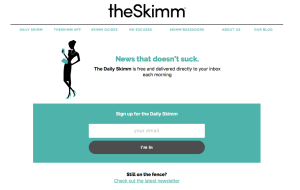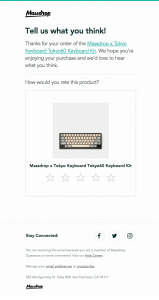— May 7, 2019

rawpixel / Pixabay
Understanding the true desire or demand for your prospective new product or service is vital before you move “full speed ahead” to bring it to market. It’s important to set the stage for a successful and sustainable future for your new offering, but it can be equally valuable to learn that the demand isn’t there or that considerable shifts need to be made so that more dollars, time and energy are not wasted.
We sat down with Launch Marketing’s executive team (Christa Tuttle – CEO, Shawna Boyce – Executive Director, Jeff Raymond – Executive Director) for their insights into best practices to qualify a market need for new products or services.
1. What are some best practices for evaluating demand or need for a new product or service?
Christa: Research, research, research. There’s really no replacement for an objective perspective of how realistic your demand is. I typically recommend a comprehensive approach of secondary research combined with primary research, such as talking to would-be prospects or others who operate in a different niche within the same market. A great source of secondary research are fellow industry contacts you may be connected with via local or national association groups.
Shawna: If you’re an established organization, customers are another great source of firsthand insight. Customers that are big advocates for your organization are a great, often untapped, resource for guiding new product or service decisions. User focus groups are another way to solicit input and can eliminate the guesswork from targeting potential demographics that aren’t a guaranteed match for your solution. Also, make use of the ongoing conversations your customer relationship managers are having so you’re attuned with any holes or potential add-on opportunities for your current product or service. Oftentimes customers can provide ideas for new product or service roadmaps you may not have even considered, and they’ll be the first to recognize any gaps in your current solution that could be addressed with a new product.
Jeff: It’s also important to have a clear picture of what specifically you want to learn in your research. That means having a core set of questions already prepared and an understanding of how long it will take to collect, compile and analyze the data. For something as important as a product or service launch, you don’t want to wing it.
2. Are there specific technologies or tools that can help in the research and evaluation process?
Shawna: There are a ton! I know of quite a few online market research organizations that let you specify the types of people and demographics you’re looking for so you can poll targets on everything from ideal or appealing product features to the market need of your prospective solution. Another approach I’ve used, if you already know the people you want to poll, is Survey Monkey. It has both free and paid options that let you poll large groups of people and analyze their feedback both holistically and individually.
Jeff: In the case that you don’t have contact information for folks, there are several online communities you can engage with while still targeting specific opportunities or industries. LinkedIn Groups, Reddits and Subreddits are just a few examples that offer surprisingly direct ways for you to engage with a particular audience. Your website can be another great platform to solicit feedback, especially if your new product is some sort of add-on or upgrade to offer current customers or prospects. For instance, you can add a quick exit poll on your site of three “yes” or “no” questions. Keep these exit polls short and easy for users so that they don’t detract from the online experience.
Christa: Great point Jeff, and ideally these customer feedback loops should be an ongoing piece of your overall customer experience strategy to keep them satisfied and heard throughout the entire lifecycle. Some of their feedback might even inform future product or service roadmaps and spark ideas to consider later on!
3. What are some key indicators that signal whether there is indeed a market for your solution?
Jeff: First and foremost, does your research definitively show common pain points or wishes that your product addresses? If yes, you’ll also want to evaluate whether there’s a feasible path to successful market entry against other factors- depth and ferocity of competition in the space, attractiveness of price point, total cost of ownership for your product/solution vs. alternatives, ease of implementation, etc.
Shawna: I totally agree. Again, really diving in on feedback you’re getting from users, prospects or even shoppers of your product on what is or isn’t working, or what features it may be lacking is key for getting the new solution engines running. From there, you’re operating off a solid foundation of valuable input that you can leverage to develop the complete, improved solution.
4. What are some common missteps in B2B product or service launches that can be avoided?
Jeff: A big one is avoiding or managing bias. Bias is inherent in all of us so we can’t avoid it completely, but managing those inclinations when it comes to interpreting data or objective signals that might indicate whether or not now is the ideal time for launch is vital for approaching your launch with a realistic mindset, and giving yourself the best chance of launch success.
Shawna: A common misstep I see is launching prematurely. It’s easy to get so excited about going to market with a new product or service that you overlook crucial pre-steps such as qualifying your market need or ensuring you have some level of marketing support to generate hype around your launch. Educating your target buyers early on is really important so that they know what your product is and what value it will bring for them individually.
Christa: Looking at this question from more of a macro perspective, I’ve seen organizations neglect what happens after launch. For instance, do you have a marketing plan set up to continue moving new launch leads through the sales pipeline? How will you keep that launch momentum going for the next six to twelve months? Being cognizant of your post-launch strategy, as well as the long-term vision for your offering and your company, is equally as important as the steps leading up to launch day.
Business & Finance Articles on Business 2 Community
(44)





